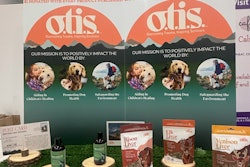
What’s the typical profile for a pet owner in the U.S. in 2025? According to Nextin Research by MarketPlace, dog owners are nearly split between women and men (50% and 49%, respectively), and 43% of all these owners also own cats. Cat ownership skews more toward women, but not heavily so these days: 54% are women while 46% are men. Of the total, 57% also own dogs.
Nextin culled this data from its 2024 survey, “Pet Category Trends,” which comprised 754 U.S. pet owners. Nicole Hill, executive director of strategy for MarketPlace, presented it and other insights during a webinar, “Global pet food trends: What’s driving market growth?”
Her co-presenter, Lindsay Beaton, editor of Petfood Industry Magazine, shared data from Packaged Facts illustrating the rise of cat ownership: While it grew only slightly from 2018-2024, 23% up to 24%, that stands in contrast to dog ownership, which dropped from 42% to 38%. Sole cat ownership (as in, no dogs, too), also grew slightly, from 11% to 12%; among households, the percentage with cats but no dogs increased by 6%, to 24% total.
(Note that Hill will be presenting other data from the Nextin survey, on pet owner perceptions of novel proteins, at Petfood Forum 2025.)
Types of dog and cat food fed, drivers for purchasing choices
What are these dogs and cats eating, and why are their owners choosing the diets they do? Mirroring sales data, most U.S. dogs and cats eat dry kibble, though the percentages aren’t as high as you might expect: 61% for dogs and 65% for cats. Another 31% of respondents feed their dogs wet food, while for cats, the share is much higher, not surprisingly, at 71%. Nextin’s study broke that down by specific types of wet cat food: 40% for flaked, 17% for pate style and 14% for semi-moist.
Somewhat surprisingly (and perhaps alarmingly), the third ranking type of food fed to dogs in this survey is “food I make at home” at 16%, the same as fresh prepared dog food. Ten percent of these dog owners feed toppers and mixers; the level of feeding of other alternative formats like raw, air dried, freeze dried or frozen fall under 10% for each. That’s true for cats, too, along with food made at home and fresh prepared meals, while 10% of them also get toppers and mixers.
For both dogs and cats, drivers for the foods their owners buy include all-natural ingredients, protein type, affordable price and type of food; the latter ranks highest for these cat owners, with 33% choosing it, yet only fourth for dog owners at 23%. Given cats’ often finicky natures, their owners also pay attention to “something I think my cat would love” (25%), while the same percentage of dog owners are looking for a specific health benefit.
Among those specific benefits — or, expressed differently as “need states” in Nextin’s study — skin and coat was the most prevalent driver for dog food, at 30%, followed by joint health (27%), daily wellness (24%), digestion (22%) and gut health (19%). Others selected by dog owners, at lower rates, included allergy relief, immunity, anti-anxiety, weight management, senior wellness, pain relief and cognitive function.
Cat owners in this survey were less likely to select specific need states; “none of the above” ranked highest at 24%. Yet ones like digestion (22%), skin and coat (20%), daily wellness (19%), urinary and kidney (16%), joint health and immunity (both at 15%) did make the list.
What ingredients are pet owners researching?
One very interesting list that Hill presented included ingredients that the pet owners surveyed had researched the most in the previous 12 months: probiotics at 32%, CBD and/or hemp at 22%, prebiotics at 17%, mushrooms at 13%, ashwagandha at 11% and postbiotics at 8%. While the biotics and CBD/hemp might be expected, the mushrooms and ashwagandha are a little surprising.
This ingredient research matched up with what pet owners consider to have health benefits. For example, 32% in the Nextin survey named probiotics, 19% listed prebiotics and 6% named prebiotics, while CBD was named by 8% and hemp by 5%. Even mushrooms (in the form of lion’s mane) made the health-benefits list, selected by 4%, and 3% selected ashwagandha.
The list of ingredients considered to have health benefits was pretty extensive, also including vitamin D (37%), omega 3 and 6 fatty acids (35%), fish oil (34%) and antioxidants (27%). At lesser levels, ingredients like glucosamine, vitamin B complex, zinc, collagen, chondroitin, spirulina, fermented yeast and marine algae also made the list. I imagine that many of these pet owners see similar benefits among these substances for themselves and their human family members.
Ingredients with the highest positive perceptions among these pet owners indicated a heavy focus on biotics: pro-, pre-, post- and syn-. Dietary fiber had the most positive perceptions; the short list that Hill provided also included phages at a lower level.
















